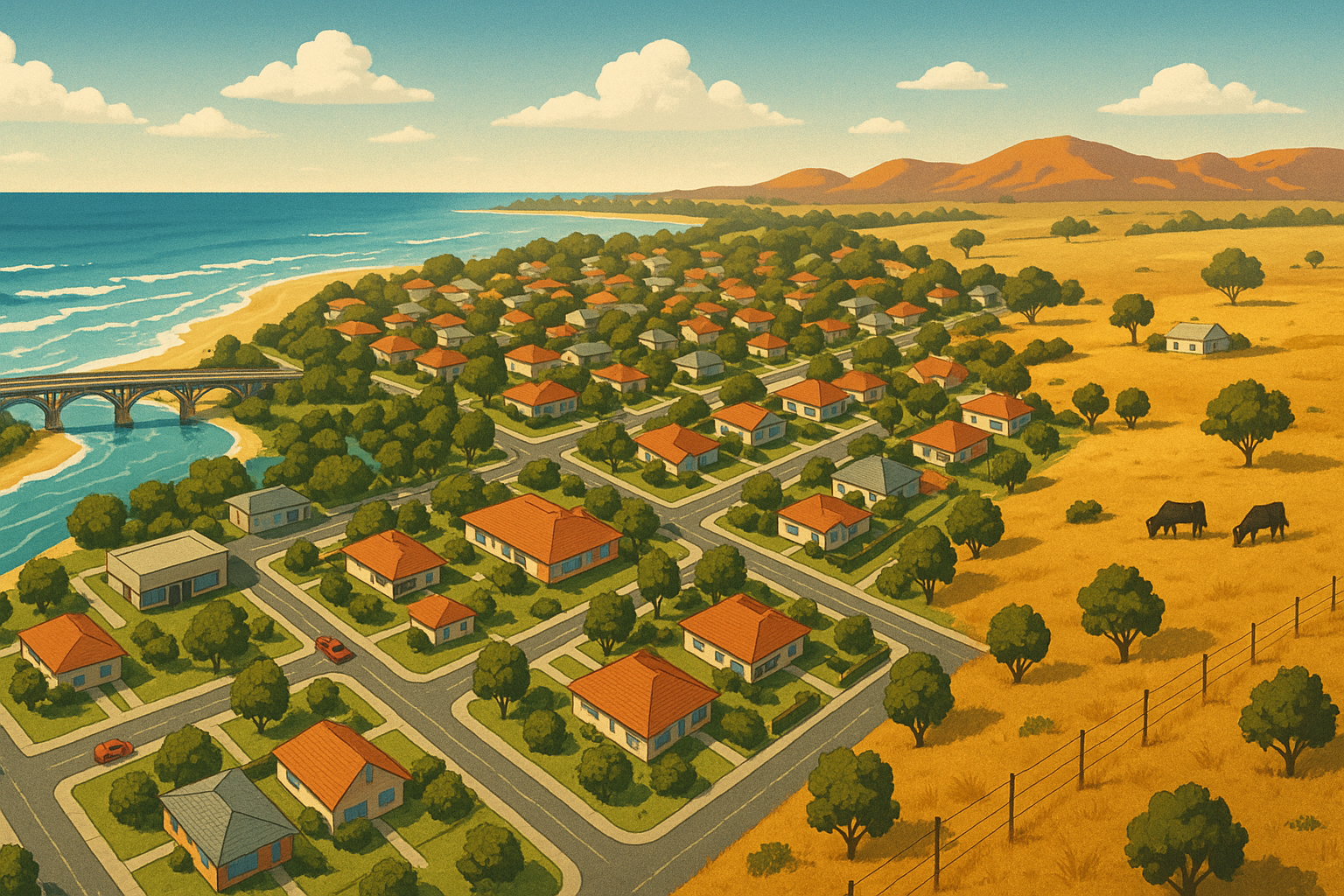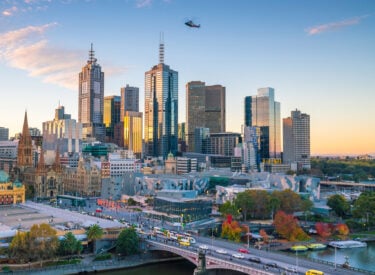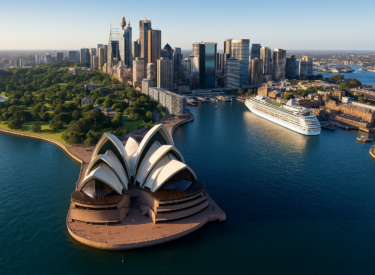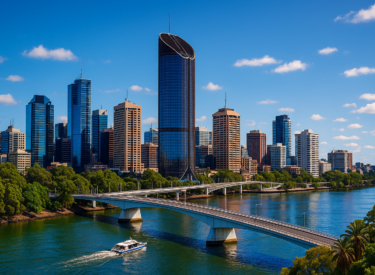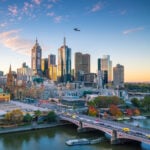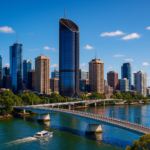
Key takeaways
Australia’s population has grown by 3.7 million over the last decade—but growth is heavily concentrated in just five cities: Sydney, Melbourne, Brisbane, Perth, and Adelaide.
80% of this growth occurred in those cities, reinforcing an urban coastal dominance.
Meanwhile, inland towns are shrinking, losing both population and essential services.
Australia is changing rapidly, not just in size, but in shape.
While our population has grown by 3.7 million over the past decade, that growth has been strikingly uneven.
Some regions are booming. Others are slowly fading into the background.
Understanding where and why this is happening is crucial not only for policymakers and planners but also for property investors, businesses, and anyone interested in shaping a resilient and inclusive Australia.
This isn’t just a geographic divide; it’s increasingly becoming a social, economic, and generational fault line.
For weekly insights and strategic advice, subscribe to the Demographics Decoded podcast, where we will continue to explore these trends and their implications in greater detail.
Subscribe now on your favourite Podcast player:
A nation hugging the coast
In our latest episode of the Demographics Decoded podcast, Simon Kuestenmacher pointed out that “Eighty per cent of our recent population growth happened in just five cities. That’s an insane level of concentration.”
That means two-thirds of Australians now live in Sydney, Melbourne, Brisbane, Perth, or Adelaide.
We’re becoming a country of mega-cities hugging the coastline while inland towns, once the backbone of our agricultural economy, slowly lose people, services, and in some cases, their futures.
But this trend isn’t new.
Australia has long been a coastal nation.
What’s changed is the intensity and the consequences.
The slow disappearance of inland Australia
Farming is becoming more efficient and less labour-intensive.
As Simon explains, “Farm aggregations mean that one family farm gets bought up by the neighbour, turned into a larger enterprise, and run with fewer workers using larger machinery.”
That’s great for productivity, but devastating for the towns that once supported those workers.
And it’s not just economic.
It’s social.
These towns lose critical services as they fall below population thresholds.
“You lose your specialist, then your GP, then the local IGA. You can’t field a footy team. The whole ecosystem starts to collapse,” Simon warns.
In many cases, it’s retirees and the elderly who remain, while younger people head to the “big cities.”
Without jobs or educational opportunities, there is little reason for them to stay.
Why don’t more people move to the Regions?
The answer is brutally simple: jobs.
Unless you're retiring or working remotely, you follow employment.
And right now, the overwhelming majority of jobs are in or near capital cities.
Simon is clear about this: “Some regional towns are desperate for workers. But unless you offer cheap housing and a decent lifestyle, you're not going to attract people on modest rural wages. You need to make it worthwhile.”
That means more than affordable homes.
It means a coherent regional development strategy, something Australia still lacks.
The Sponge City phenomenon
Interestingly, Simon describes a demographic "sponge effect" that’s occurring in regional hubs.
Towns like Dubbo, Wagga Wagga, or Bendigo are soaking up retirees who can no longer manage remote farm life or displaced agricultural workers.
But this creates communities that are rapidly ageing, and often dependent on a fragile health and social care infrastructure.
These towns aren't growing because of economic dynamism; they’re growing because they’re the last stop before the big cities.
And they, too, are at risk if they don’t adapt.
Our big cities are buckling
Meanwhile, the cities bearing the brunt of this growth are struggling to cope.
In places like Wyndham in Melbourne’s west, home to some of the fastest-growing postcodes in the country, we’re seeing rapid greenfield development.
Housing is going up fast.
Infrastructure is not.
Simon calls it out: “They draw lots of lovely train lines and hospitals on the planning documents, but they rarely eventuate. And when they do, it’s years too late.”
This creates frustration, congestion, and growing inequality within cities.
Affordable housing without transport and services isn’t really affordable.
We can turn this around—but only if we plan
If we want to revitalise regional Australia, we need to start thinking boldly.
Simon proposes ideas like geo-located skilled migration visas, where aged care workers or nurses are granted working rights tied to specific regional areas.
“This could massively benefit the regions if we had an overarching population strategy behind it,” he says.
He also sees opportunities in strategic decentralisation.
“We need to create excuses to live in inland—manufacturing hubs, training centres, even entire new cities built around one economic function.”
Phoenix, Arizona, grew into a megacity thanks to the air conditioning industry and its abundant, cheap land.
There’s no reason we couldn’t see something similar in Australia with the right infrastructure and incentives.
But we have to move beyond simply hoping things will work out.
As Simon puts it, “At the moment, we just throw people into the same cramped cities with no coherent plan.”
The risk of a two-class nation
There’s a deeper concern here.
One of identity and one of national cohesion.
Simon warns, “We’re seeing two Australias emerge—urban and regional—each unable to understand the other’s way of life. One sees the other as chaotic and anonymous, the other as dull and isolated. That’s not healthy.”
And it’s not sustainable.
If we continue on this path, we’re not just looking at housing and employment challenges.
We’re staring down the barrel of a fractured national culture.

What should success look like?
By 2035, if we’ve done our job right, Simon envisions a country that has started to plan long-term.
One where growth is distributed more evenly.
One where regional hubs aren’t a last resort, but a first choice.
One where fast rail links allow people to live between cities and still work, study, and socialise effectively.
We might not have bullet trains in 10 years, but we should have corridors earmarked and protected.
“Even that would be progress,” Simon says. “If we don’t reserve that land now, we’ll never build it later.”
So what does this mean for investors?
For savvy property investors, these trends are essential to watch.
Growth will continue, but it won’t be everywhere.
Identifying areas with real employment drivers, sound infrastructure, and proactive planning will separate the wheat from the chaff.
But more broadly, this is about the future of Australia.
The choices we make today—about housing, migration, transport, and services—will shape not just the next 10 years, but the next 70.
And if we don’t plan now, the cost of inaction will be paid not just in dollars, but in opportunity lost.
If you found this discussion helpful, don't forget to subscribe to our podcast and share it with others who might benefit.
Subscribe now on your favourite Podcast player:

